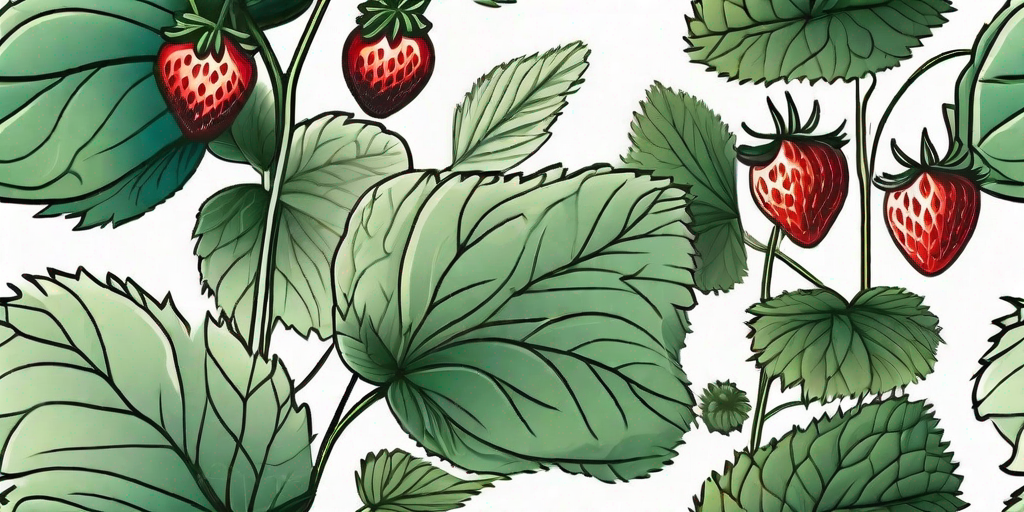
Welcome to the wild side of gardening, where we ditch the traditional and embrace the untamed. Today, we're going to explore the world of wild strawberries, those tiny, tantalizing treats that put their supermarket counterparts to shame. If you're ready to roll up your sleeves and get your hands dirty, then let's dive into the wild, wonderful world of wild strawberry cultivation.
Understanding the Wild Strawberry
Before we start planting, it's essential to understand what makes wild strawberries, well, wild. Unlike their domesticated cousins, wild strawberries (Fragaria vesca) are smaller, sweeter, and pack a more intense flavor punch. They're the little rebels of the strawberry world, refusing to conform to the norms of size and taste.
Wild strawberries are also known as alpine strawberries or woodland strawberries. They are perennial plants, meaning they come back year after year, much like your in-laws during the holidays. But unlike your in-laws, you'll actually be happy to see these little guys pop up each spring.
The History of Wild Strawberries
Wild strawberries have a long and storied history. They've been enjoyed by humans for millennia, with archaeological evidence suggesting that people in the Stone Age were already fans of these sweet little berries. They were also a favorite of the Romans, who used them in a variety of dishes and believed they had medicinal properties.
Fast forward a few centuries, and wild strawberries were being cultivated in European gardens by the 14th century. They were so beloved that they even made their way into literature, with mentions in works by Shakespeare and Virgil. So, when you're growing wild strawberries, you're not just gardening - you're continuing a tradition that's thousands of years old.
Getting Started with Wild Strawberries
Now that we've covered the basics, let's get down to the nitty-gritty: how to grow your own wild strawberries. Don't worry, it's not as daunting as it sounds. In fact, wild strawberries are surprisingly easy to grow, making them a great choice for beginners and lazy gardeners alike.
First things first, you'll need to get your hands on some wild strawberry plants or seeds. You can find these at most garden centers or online. Just make sure you're buying from a reputable source to ensure you're getting the real deal and not some imposter strawberries.
Choosing the Right Spot
Wild strawberries are pretty low-maintenance, but they do have a few requirements when it comes to their living conditions. They prefer well-drained soil and a sunny to partially shaded spot. Think of them as the Goldilocks of plants - they don't want too much sun or too little, but just the right amount.
They're also quite sociable and like to spread out, so make sure you give them plenty of space. If you're planting them in a garden, aim for a spacing of about 30 cm (12 inches) between plants. If you're planting them in pots, choose a pot that's at least 30 cm (12 inches) in diameter.
Planting and Care
Once you've found the perfect spot, it's time to get planting. If you're using plants, simply dig a hole that's big enough to accommodate the root ball, place the plant in the hole, and fill it in with soil. If you're using seeds, sow them directly into the soil and cover lightly with soil.
After planting, give your strawberries a good watering. They like their soil to be consistently moist, but not waterlogged. Think damp sponge, not soggy marshland. You should also feed them with a balanced fertilizer every few weeks during the growing season to keep them happy and healthy.
Harvesting Your Wild Strawberries
Now comes the best part: harvesting your wild strawberries. This usually happens in late spring to early summer, but can vary depending on your climate. You'll know they're ready to harvest when they're fully red and easily come off the stem.
But here's the thing about wild strawberries: they're not the most prolific producers. You won't get buckets of berries from each plant. But what they lack in quantity, they more than make up for in quality. Each berry is a little burst of intense, sweet flavor that's well worth the wait.
FAQs about Wild Strawberries
Are wild strawberries safe to eat?
Yes, wild strawberries are safe to eat and are incredibly delicious. However, make sure you're picking actual wild strawberries and not their poisonous look-alikes, mock strawberries.
How long does it take for wild strawberries to grow?
From seed to harvest, it usually takes about 4-6 months for wild strawberries to grow. However, once established, the plants will come back year after year.
Can I grow wild strawberries indoors?
Absolutely! Wild strawberries are quite adaptable and can be grown in pots indoors, provided they get enough light.
Wrapping Up
So there you have it, your comprehensive guide to growing wild strawberries. With a bit of patience and care, you'll soon be enjoying your own delicious harvest of these sweet, wild treats. So why not give it a go? After all, life's too short for boring strawberries.
Remember, gardening is all about experimenting and having fun. So embrace the wild, get your hands dirty, and discover the joy of growing your own wild strawberries. Happy gardening!











